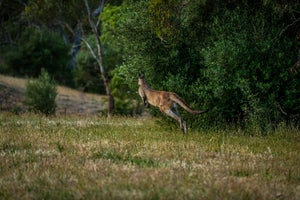As a British wine consumer, when you think of Fine Wine, the first thing that probably comes to mind are names from the famous wineries in Bordeaux such as Château Mouton Rothschild, Château Margaux, Château Pavie or Vieux Château Certan… the list will be endless. From Barolo the prestigious name Gaja might spring to mind, or even Tignanello from the Tuscan hills, famous for their powerful Super Tuscans.
From Australia, the list is most likely to be shorter, with names of the world renowned Penfolds Grange or Henschke Hill of Grace being at the top. The sad reality is, in the UK, Australia’s reputation was tainted by low cost wines imported in bulk to be rebottled in the UK and sold by the supermarkets. Unfortunately, wine consumers made the assumption (rightly so!) that all Australia had to offer was heavily oaked Chardonnays and fruit bomb reds at 8 or 10 quid a bottle. Thankfully Australia is in the process of rehabilitating its image and the old tropes no longer carry much water.
As a wine growing region, Australia grows the widest variety of grapes and produces an incredibly impressive variety of styles of wine when compared to anywhere else in the world. The majority of vineyards are located in Western Australia, South Australia, Victoria and New South Wales and each region offers something completely unique.
Australia has actually achieved what many wine growing regions are still trying to master. They are producing not only wines that are fruit forward and extremely enjoyable to drink when young, but that also have fantastic ageing potential and develop deep and complex flavours as they age.
But what does Fine Wine even mean? Good question, and one we’re not sure there is a definite answer for. One reason the wine industry is so attractive on a personal level, is that it is completely subjective. Fine Wine suggests a wine that is of higher quality when compared with other wines. The grapes may come from a prestigious vineyard, located in prime position for vines to grow grapes that can produce single vineyard wines with exceptional balance, good acidity, ageing potential etc. Fine Wine should tick all the boxes, which can come with a high price tag.
Does the price tag always need to break your bank though? Absolutely not, the small batch aussie producers are striving to deliver value for money in a globally competitive market.
When thinking about how so many different styles of wines are produced, it’s important to consider and understand the unique terroir, soil, climate and geology. For example, in New South Wales, the wine growing region of Orange is located around 3 hours West from Sydney and vines are thriving on the extinct volcano; Mount Canobolas. With vines planted 600m to 1000m above sea level on fertile volcanic soil, with cool climate conditions and plenty of sunshine, wineries are producing exceptional red and white wines which are vibrant and fresh in style, whilst not forgetting great ageing potential.
The Barossa Valley in South Australia is home to some of the oldest vines in the world, producing phenomenal Shiraz, Cabernet Sauvignon and GSM blend wines with great intensity and complex flavours. Known for their striking eucalyptus trees, it’s very common to detect eucalyptus and menthol aroma in Australian red wines- especially Cabernet Sauvignons from the Coonawarra.
The Australian Wine and Research Institute (AWRI) conducted a study and found that due to reds being fermented in contact with their skins, the aromatic compound that causes this character (called 1,8-cineole), is the reason for us being able to detect these notes. The study explains that if eucalyptus trees are planted within a certain distance of the vines, the 1,8-cineole can transfer on to the grape skins. Hence, why we are unable to detect the aromas in white wines as the skins are separated quickly.
The rolling slopes over Adelaide Hills, along with the coastal influences provide vineyards with cooler growing conditions and wineries that are producing more savoury and elegant style red and white wines. The wines from the McLaren Vale have many wine lovers hooked already, with its diverse styles and impressive quality. It's microclimate provides consistently warm and dry growing conditions, perfect for producing opulent and full bodied Shiraz wines. However, the drought-resistant and adaptable Grenache grape variety is the rising star of the region, giving Rhone Valley Grenache wines a run for their money. The availability of Grenache grapes from the McLaren Vale are limited and in high demand from producers, hence the premium prices and overtaking the price of Shiraz fruit.
Over in Western Australia, the Margaret River region is producing Chardonnays with more mineral and floral notes, along with Bordeaux style reds, due to higher levels of rainfall. With coastal influences in Victoria, the Yarra Valley and Mornington Peninsula are producing world class Pinot Noir and Chardonnays.
All in all, we can safely say that long gone are the days of heavily oaked Chardonnays from the New World. After one sip of Chardonnay from wineries such as; Sew & Sew, Ross Hill, Leeuwin Estate or Serafino, the words used to describe these wines will be elegant and mouth wateringly delicious.
If you are a wine explorer and seeking to discover new fine wine gems, we can be sure to help you on this journey and make your list of Australian fine wine producers, just as long as your old world list!
18/09/2022



